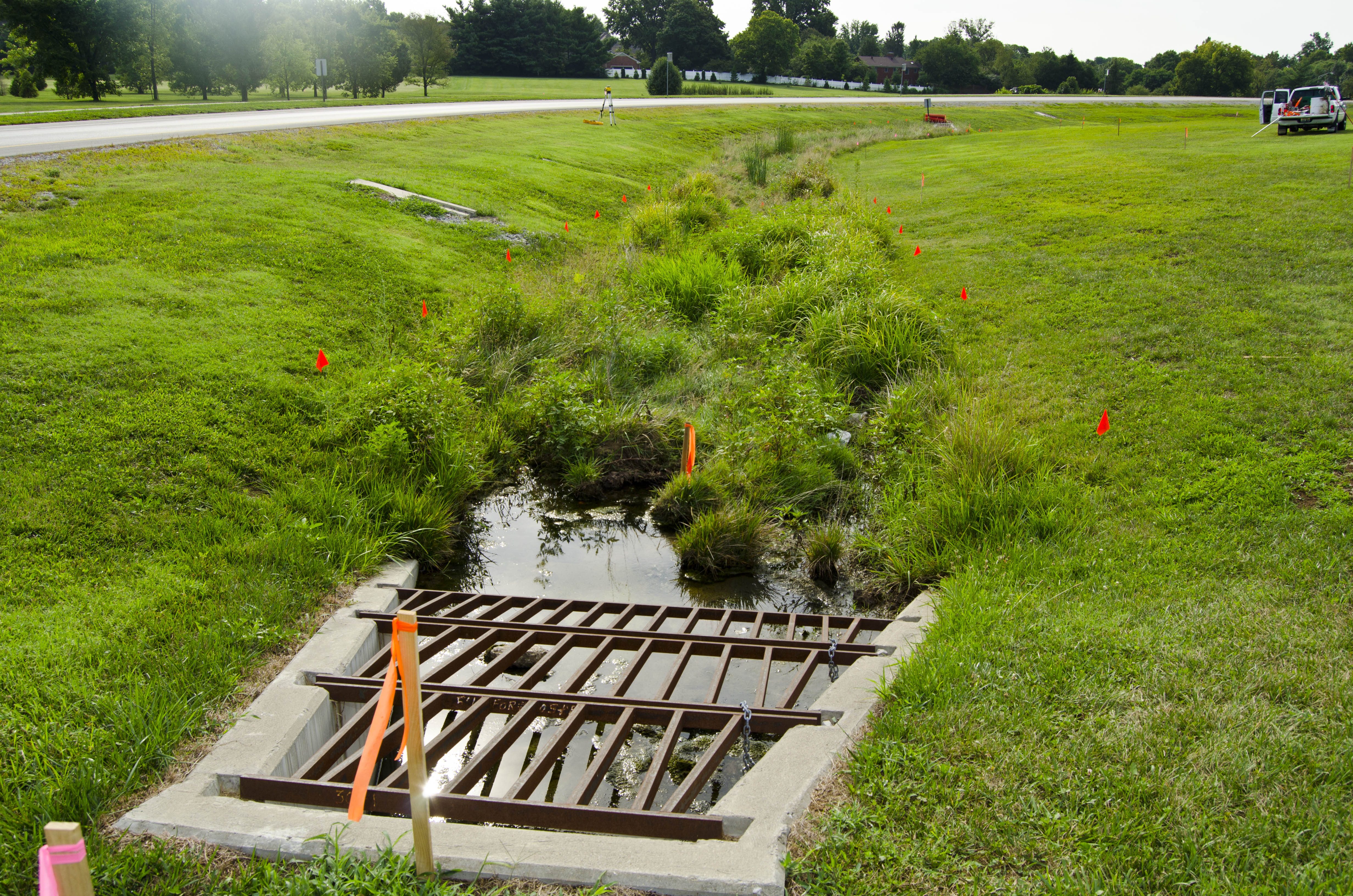UK stream restoration project to improve water quality, provide outdoor classroom for students
UK stream restoration project to improve water quality, provide outdoor classroom for students

LEXINGTON, Ky., — The first phase of a stream restoration project on the University of Kentucky campus has begun. When all phases of the project are completed in late fall, water runoff from the fields and adjacent parking lots will be controlled, which will result in improved water quality, area beautification and an outdoor learning laboratory for UK students.
If all that seems like a lot to come from one restoration effort, College of Agriculture, Food and Environment associate dean for instruction, Carmen Agouridis, and Eric Dawalt, engineer and project manager, decided this was the prime opportunity to make a big splash, as it were.
Agouridis became involved when UK’s Physical Plant Division contacted her about a wet area they were having trouble mowing.
“I looked at this as an opportunity to do another stream restoration project on campus, with the idea that we could use it as an outdoor learning laboratory for our students,” said Agouridis, who is also an extension associate professor in the Department of Biosystems and Agricultural Engineering.
Agouridis and Shane Tedder, director of the UK Office of Sustainability, acquired funding from the Lexington-Fayette Urban County Government’s Water Quality Management Fee and the Stormwater Quality Projects Incentive Grant Program.
The first phase of the project is the construction of a short bioswale in the center median on Alumni Drive. Water draining from approximately 50 acres around the UK athletic fields and parking lots flows under the west-moving lane and resurfaces in the median through a headwall. There it flows for 250 feet until it returns underground and resurfaces in a flat area between the athletic fields and a residential area. Brad Redmon, field superintendent for Ridgewater/EcoGro, two companies partnering in the project, explained that a three-foot deep amended soil filter of sand, topsoil and compost in the swale will act as a filter and also promote high rates of infiltration, reducing the amount of water that resurfaces behind the neighborhood. UK will plant trees at the upper end of the basin, and Redmon’s team will plant wildflowers and native grasses in the bioswale.
“We’re hoping that it infiltrates water and improves its quality before it hits the stream,” Dawalt said. “Water that runs off the road carries pollutants, so we’re trying to capture those and filter them out and also make it aesthetically attractive.”
The actual stream work in the field will be unique in that it will include three different restoration techniques, which will provide educational and research opportunities for students studying stream restoration, natural resources, engineering and forestry. The upper part of the unnamed tributary to Hickman Creek will be a regenerative design where the stream begins to form. The middle will be a single-channel stream, very much like the one that was restored along Alumni Drive where it joins Nicholasville Road. The last part will be a braided system with two or three flow paths.
“It will also have a lot of vegetation, so it will have more of a wetland look to it,” Agouridis said. “Using three styles will allow us to teach students about different restoration techniques and how they each function with regards to water quality, plant development and habitat.”
Dawalt is excited about the multiple design plans for the tributary. He remembers playing in creeks when he was growing up in Grant County, and wants every child to have that same opportunity.
“It’s a very rewarding type of work, I will say that. And it’s challenging. And it’s kind of new. There’s not a book on how to do it, so we’re learning as we go in many ways,” he said. “Hopefully we’re adding to the science and the technical abilities.”
And also training the next generation of engineers, landscape architects, scientists and conservationists.
Biosystems Ag Engineering



